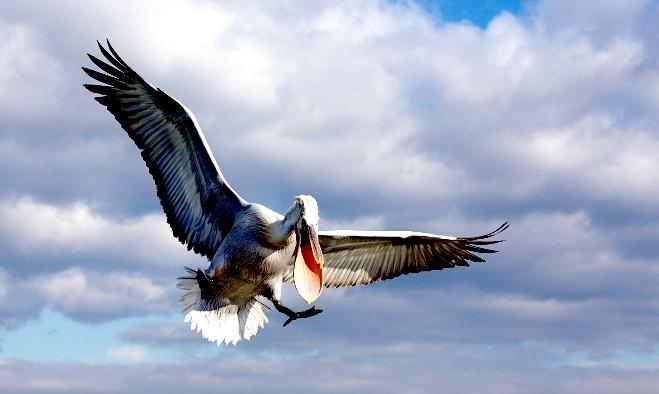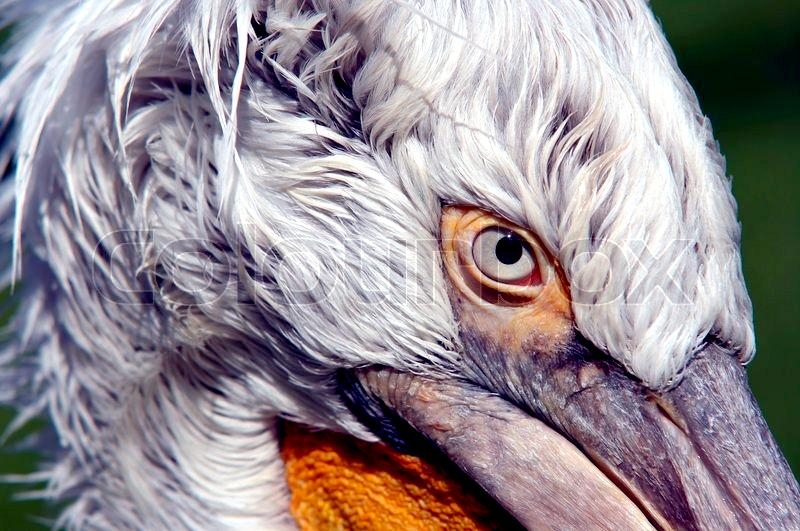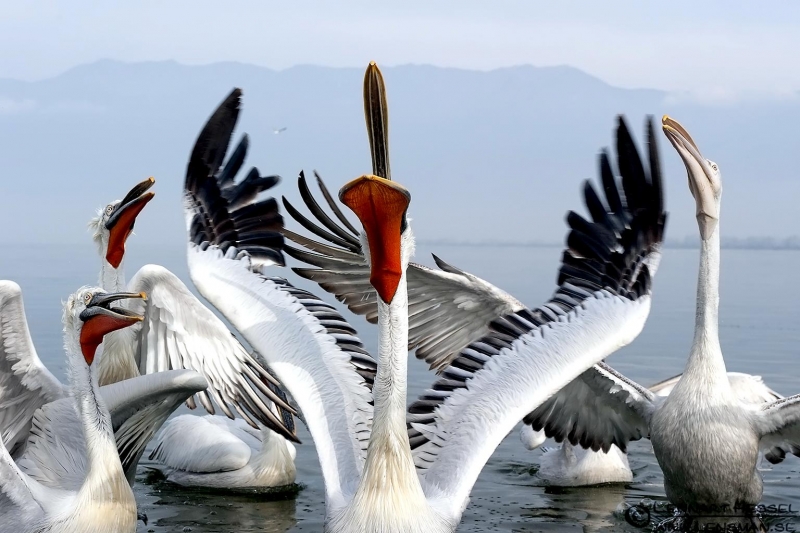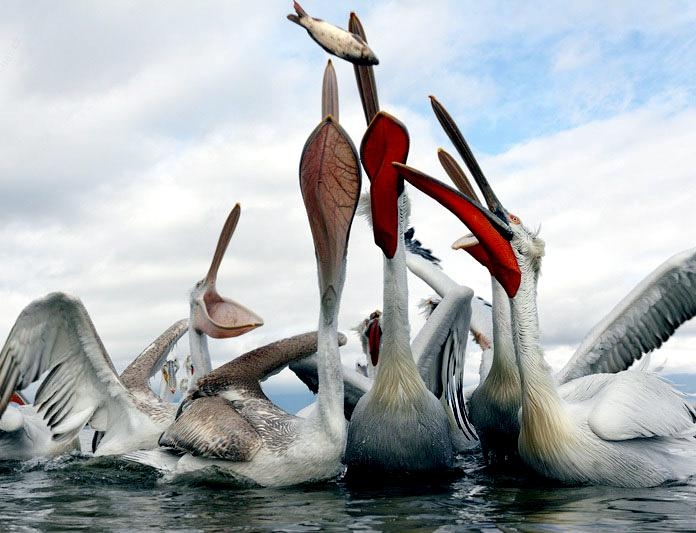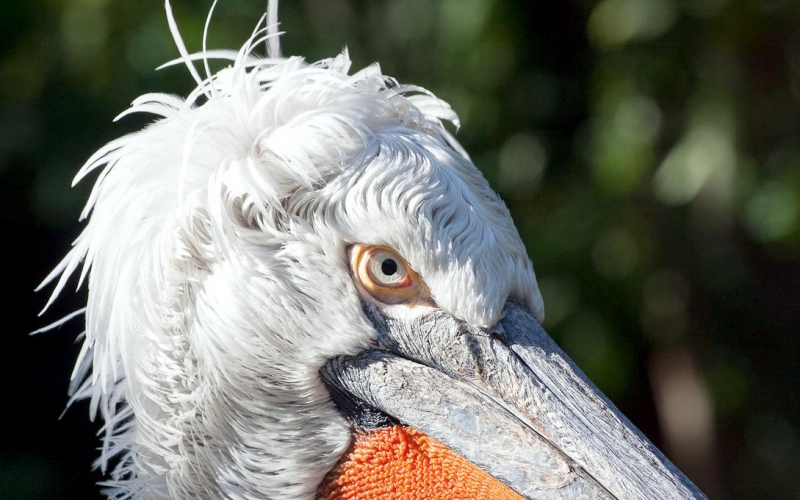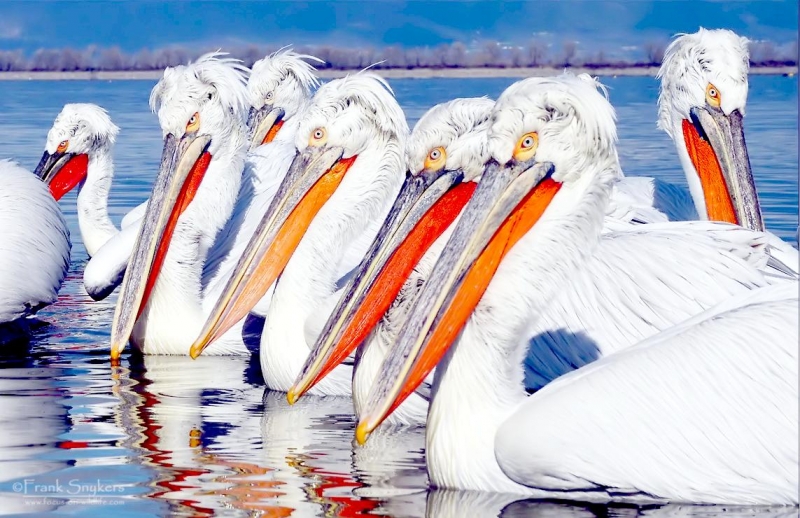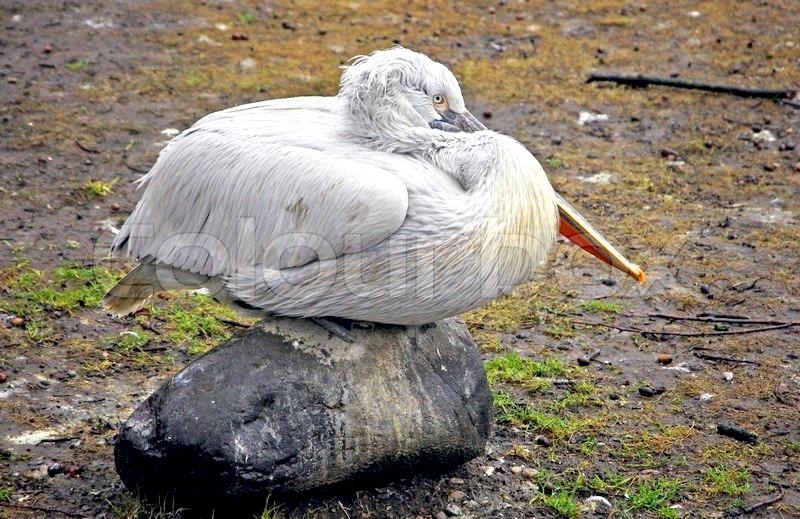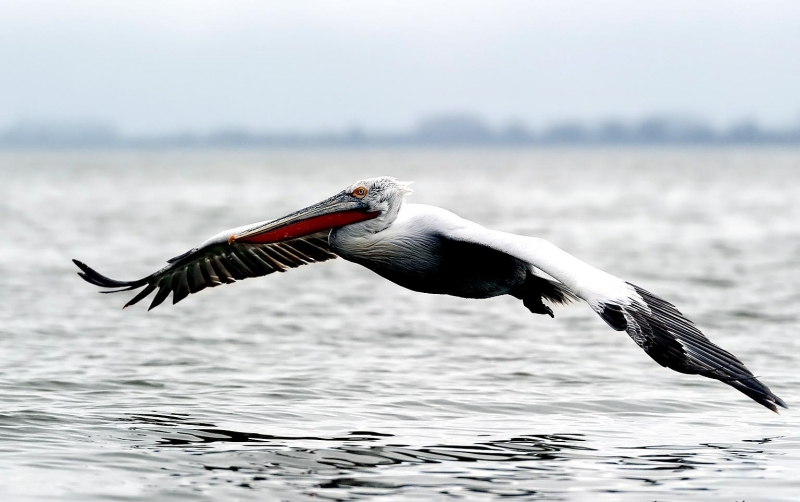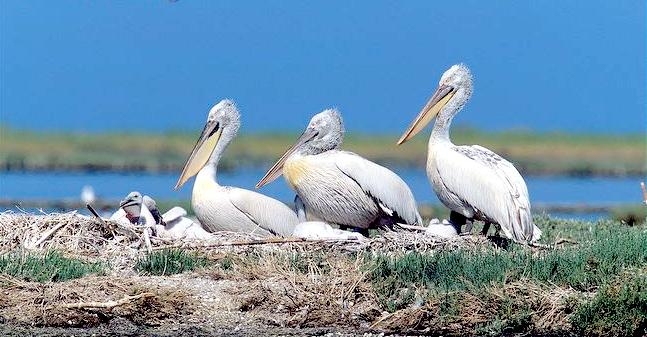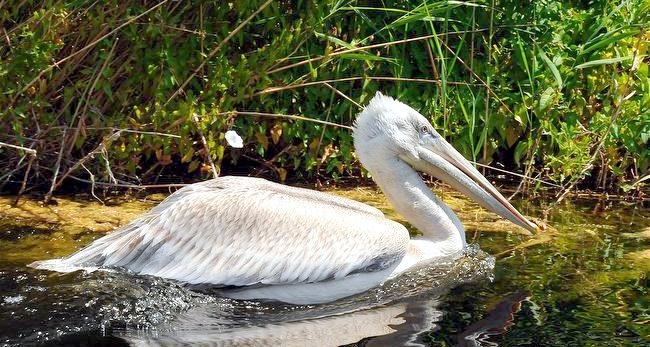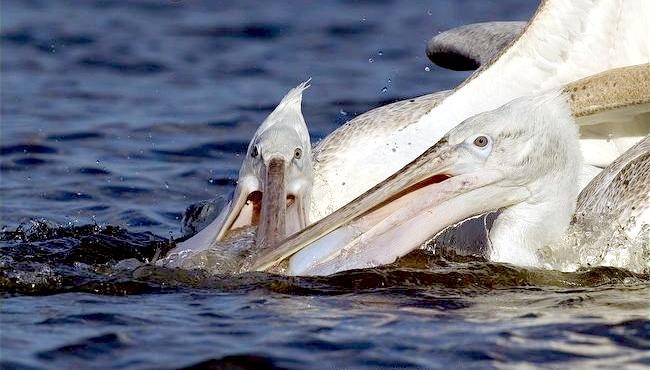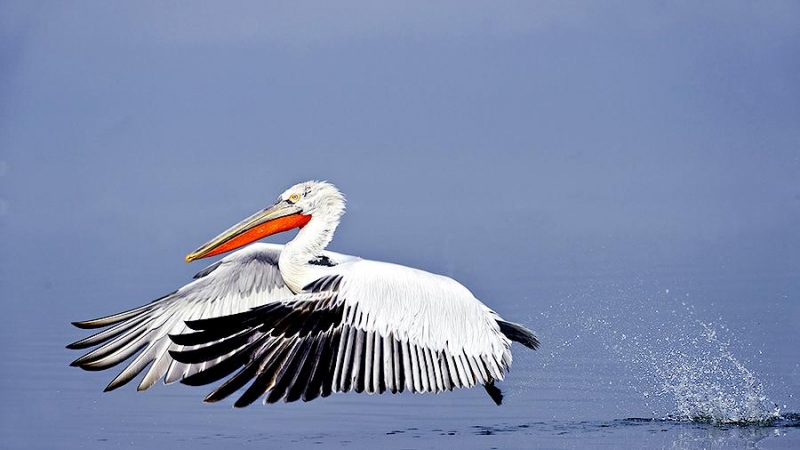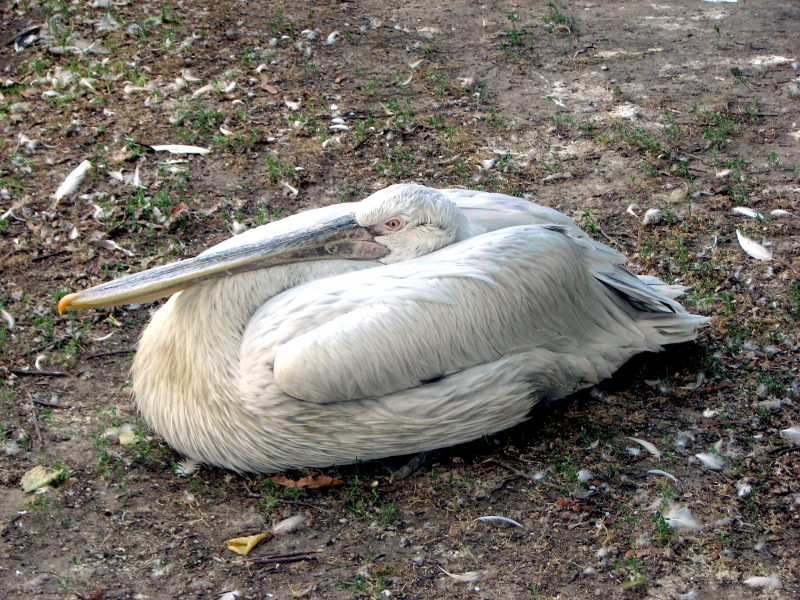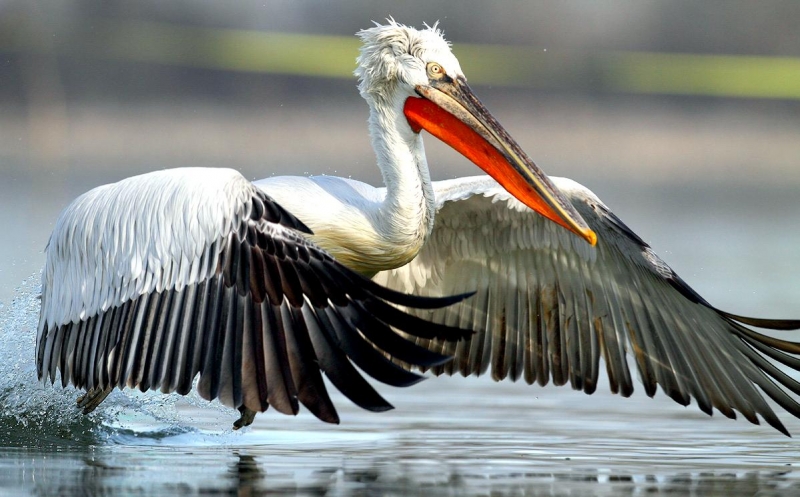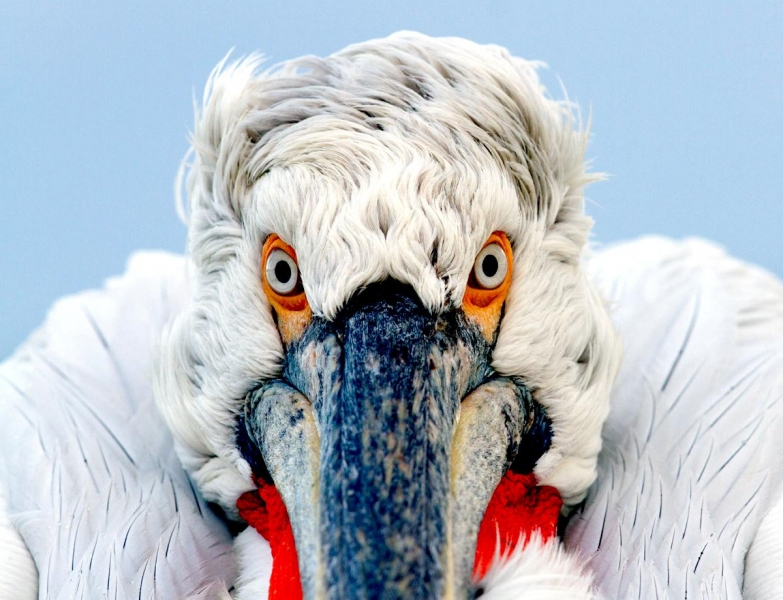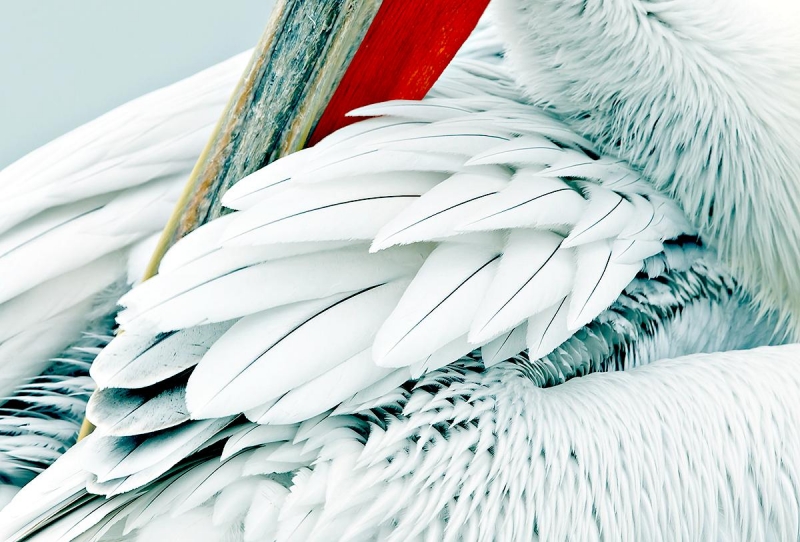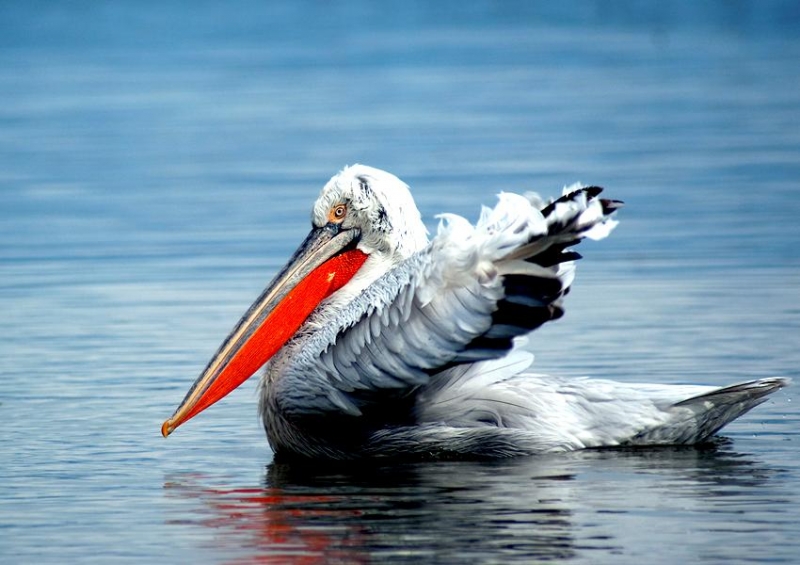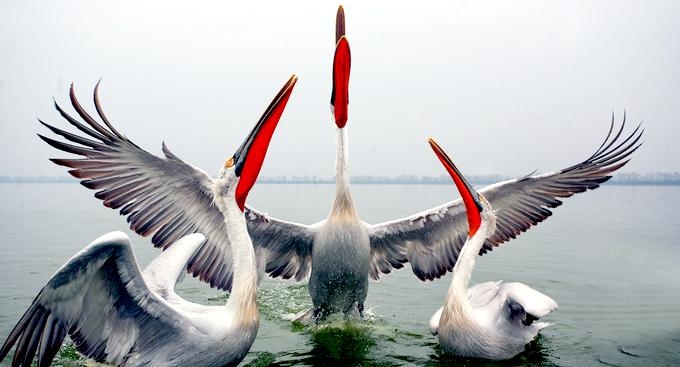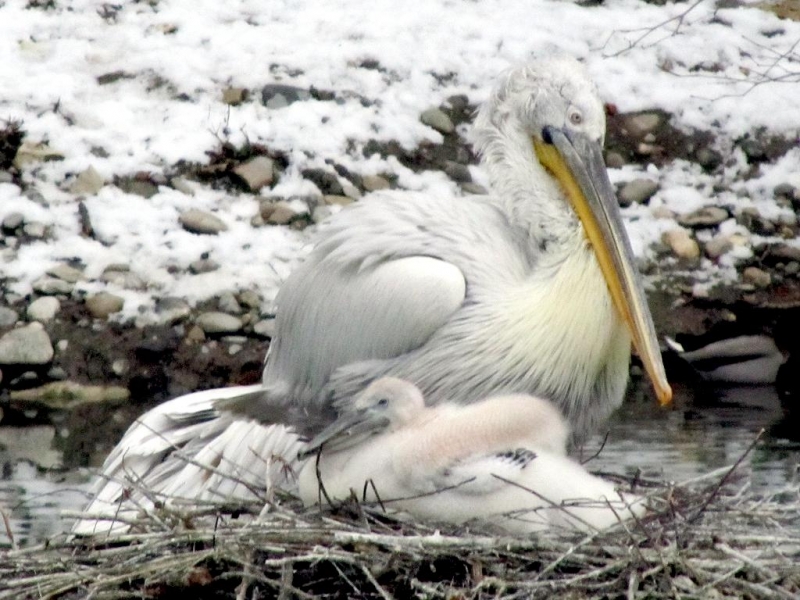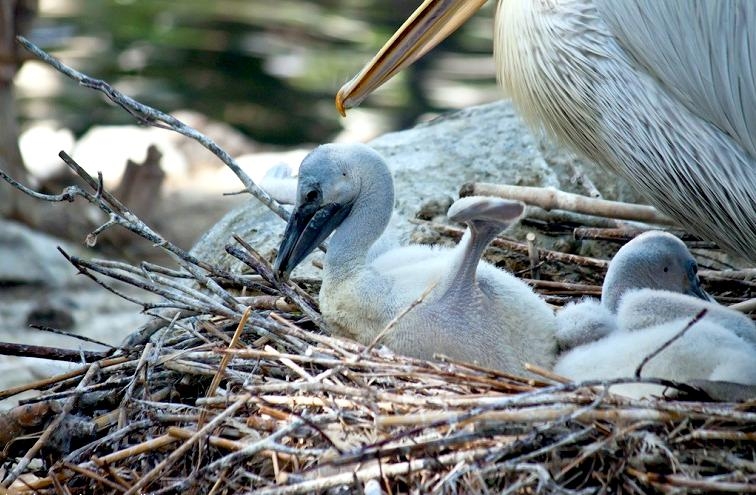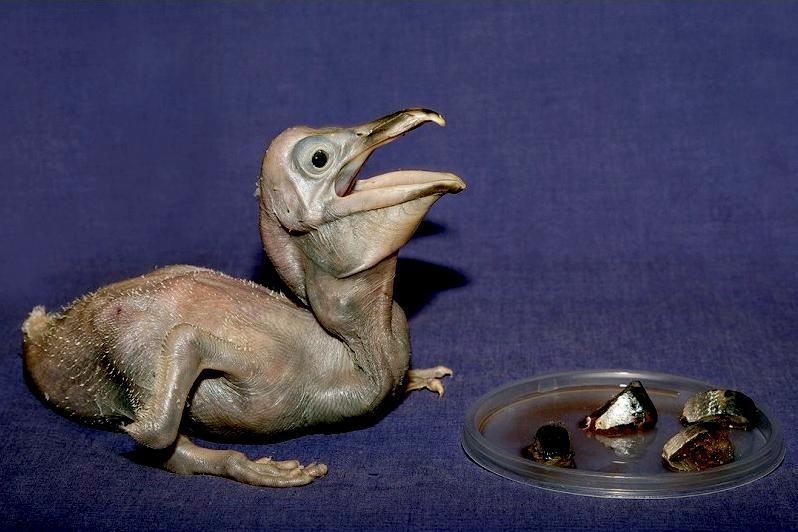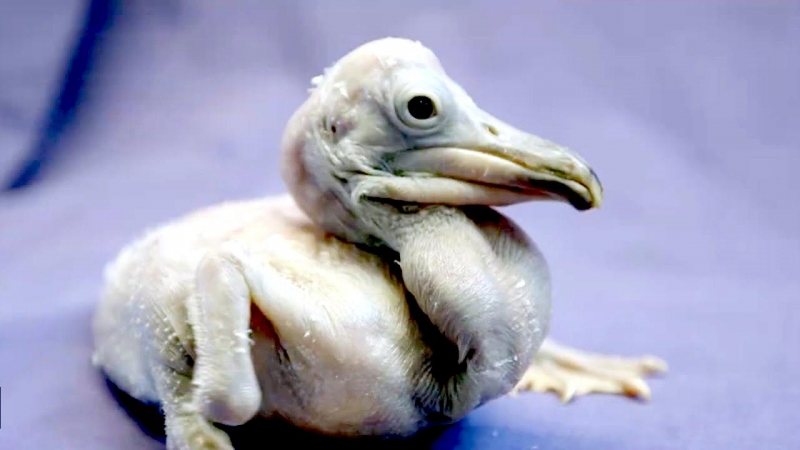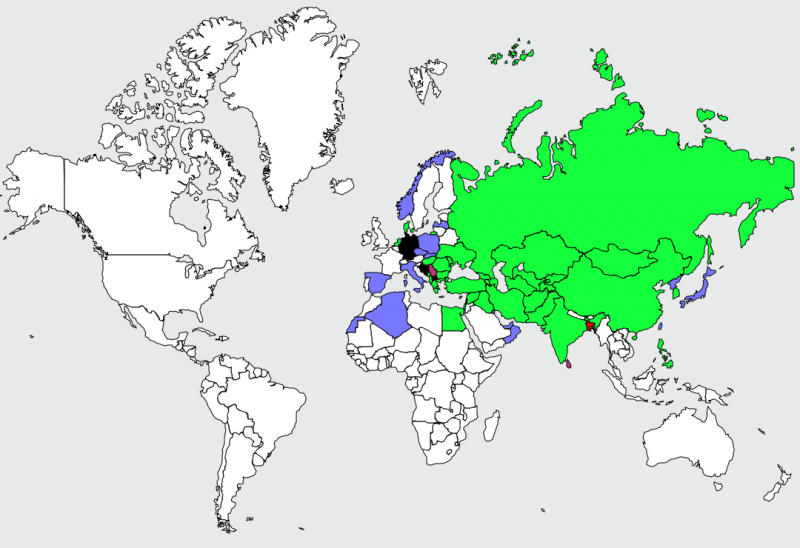“Pelecanus crispus”
The Dalmatian Pelican is an enormous bird native to such Asian countries as China and India, as well as to the southern regions of Europe especially Greece. It is white in color, with silvery-white feathers and can grow up to 70 inches in height, 33 pounds in weight and 9 feet in wingspan. These physical characteristics make the Dalmatian Pelican one of the largest living birds known to man, the largest of the species of Pelican and a competitor with Kori, Great Bustards & Great Swans for the title of being the heaviest among all flying birds in the world as well. The name “pelican” comes from the Ancient Greek word pelekan (πελεκάν), which is itself derived from the word pelekys (πέλεκυς) meaning “axe”. Its bill is colored yellow during the winter season, as opposed to orange-red and yellow during the breeding season. The Dalmatian Pelican survives entirely on a diet composed of different types of fish, such as common rudds, catfishes, perches and eels. Fish such as pike, mullet, perch and gobies are also particular favorites of the Dalmatian Pelican, which they forage for either alone or alongside others. These birds rarely hunt in groups with more than 3 individuals, preferring to find their food following their own preferred pace without distractions being provided by the presence of competition. This type of pelican makes a ducking movement of its head underwater when it scoops up fish, along with large amounts of water which is later dumped through the pouches located at the sides. Other food sources for the Dalmatian Pelican include tiny water birds, eggs, worms, crustaceans and beetles.
The Dalmatian Pelicans form large colonies in Greece as well as in some parts of Eastern Europe and Asia, specifically in such countries as India, China, Hong Kong, Kazakhstan, the Ukraine, Serbia, Mongolia and Romania. Like all animals, these birds are being threatened by careless human activities, especially when they are being killed by fishermen or when their natural habitats are being destroyed, polluted, altered and otherwise over-exploited. These birds are commonly found thriving near where their food sources are which are typically within lakes, streams, rivers & estuaries. During the winter, they have been known to stay on ice free bodies of water located in India and other parts of Europe. At present, only 20,000 individuals have been recorded as being alive, which shows that their population has greatly declined over the past 3 decades. As such, the International Union for the Conservation of Nature’s most recent Red List of Threatened Species has classified Dalmatian Pelicans as a “Vulnerable” species. Dalmatian Pelicans are able to migrate short distances, usually over into Asia, where many of their favorite food sources are found abundant & thriving. Being excellent swimmers, they are also great fliers and able to withstand temperatures quite different from those climes of their normal habitats. They can fish for food with other pelicans, although the majority of the time they will hunt alone in areas where they are the only predators. Dalmatian Pelicans prefer to nest in areas that have not been encroached upon by humans, particularly favoring islands & river deltas. When nesting, Dalmatian Pelicans do so without the company of other birds. The female is tasked with the incubation of the 1 to 6 eggs that she has lain, while the male goes out in search of food. Caring for the young ones is carried out by both the male & female. This lasts up until they are 12 weeks old, at which time they’re able to fly out of their parents’ nests and find their own food. Under certain circumstances, Dalmatian Pelicans may choose to nest in colonies in which case as many as 250 pairs may be found breeding in a single area.





